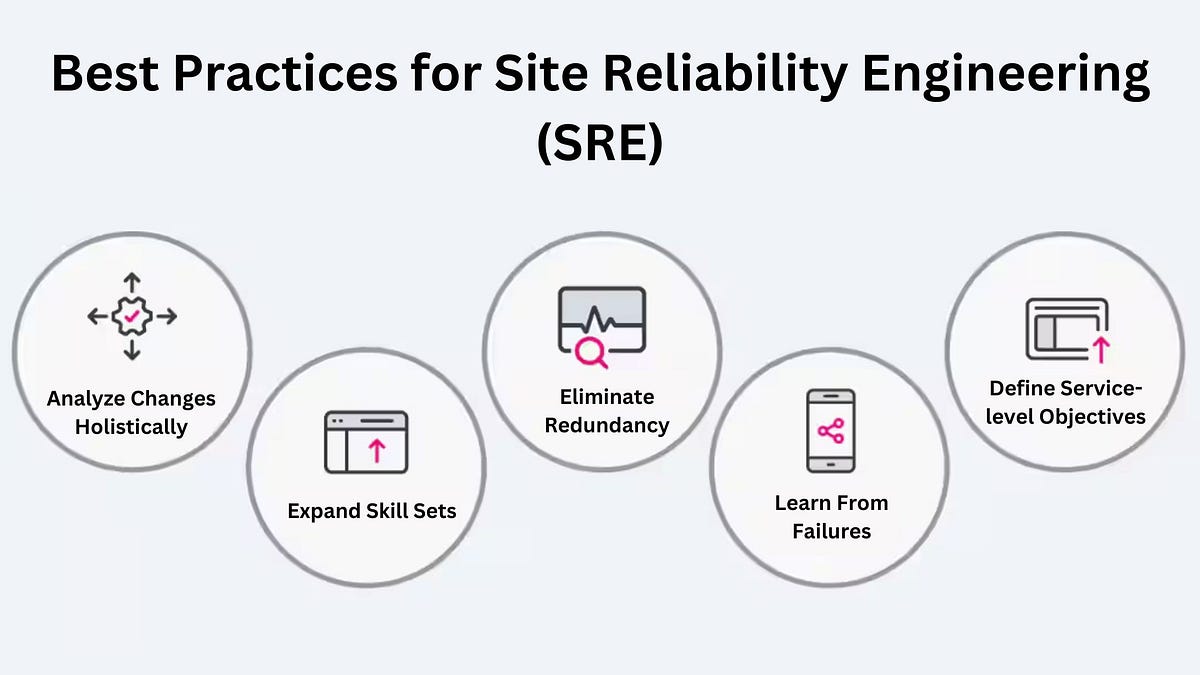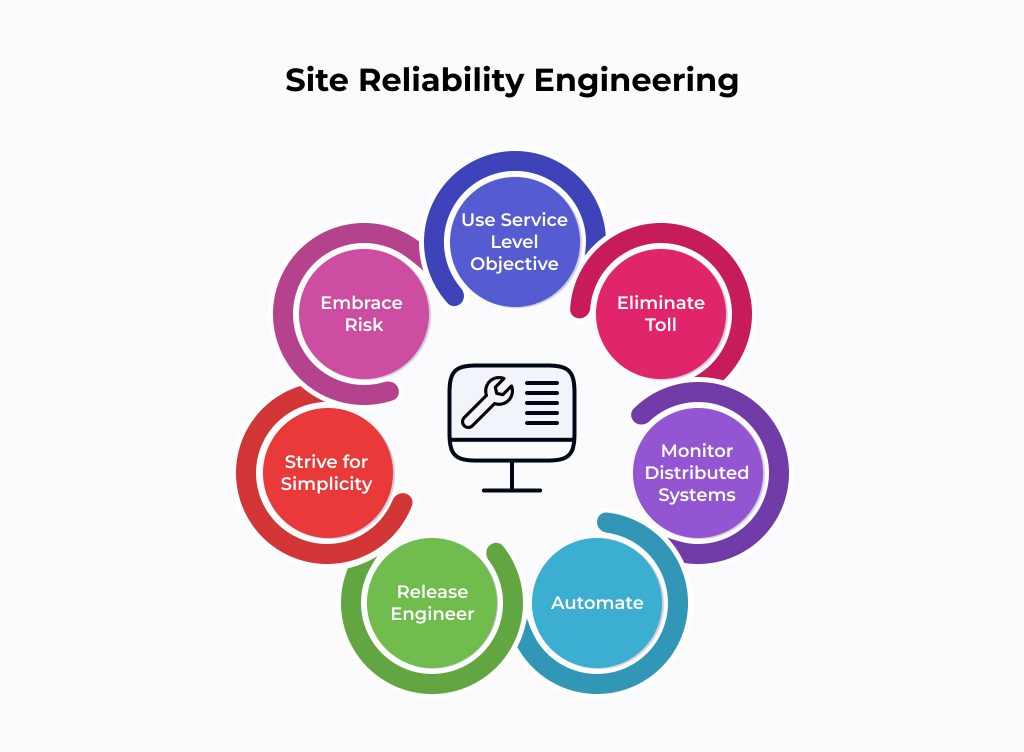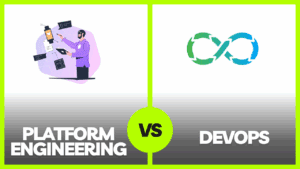Key Takeaways
- Site Reliability Engineering (SRE) is essential for maintaining high availability and reliability of web services, aiming for “five-nines” or 99.999% uptime.
- Implementing SRE best practices can significantly reduce manual work through automation, freeing up engineers to focus on innovation.
- SRE aligns closely with business objectives by ensuring systems are resilient and meet customer expectations.
- Continuous learning from failures is a cornerstone of SRE, transforming incidents into opportunities for improvement.
- Effective SRE practices require a multidisciplinary team skilled in both software engineering and operations.
Quick Start to Site Reliability Engineering Best Practices
In today’s digital age, the demand for reliable and resilient web services is higher than ever. Site Reliability Engineering (SRE) plays a pivotal role in ensuring that services are not only up and running but also operating at optimal levels. Whether you’re new to the concept or looking to refine your existing practices, understanding the core of SRE can set you on the path to success.
The Crucial Role of SRE in Modern Operations
Site Reliability Engineering isn’t just about keeping systems running; it’s about enhancing their performance and reliability. As businesses increasingly rely on digital platforms, any downtime can translate to significant revenue loss. Therefore, SRE ensures that systems are robust enough to handle the demands placed on them.
Most importantly, SRE focuses on automation to reduce manual intervention, which often leads to errors. By automating repetitive tasks, engineers can concentrate on more strategic initiatives that drive business growth. This shift from reactive to proactive management is what sets SRE apart from traditional IT operations.
Besides that, SRE fosters a culture of continuous improvement. It encourages teams to learn from incidents through detailed postmortems, turning failures into valuable lessons. This approach not only enhances system reliability but also boosts team morale and collaboration.
How Best Practices Enhance Team Efficiency
Implementing best practices in SRE is not just about following a set of rules; it’s about creating a framework that empowers teams to work more efficiently.
- Automate Toil: Identify repetitive tasks and automate them to free up time for innovation.
- Encourage Collaboration: Break down silos between development and operations teams to foster a collaborative environment.
- Focus on Scalability: Design systems that can scale easily with growing demand.
- Invest in Training: Equip your team with the necessary skills and knowledge to handle complex systems.
By following these practices, teams can not only improve their efficiency but also contribute to the overall success of the organization.

“Site Reliability Engineering (SRE …” from medium.com and used with no modifications.
Understanding Site Reliability Engineering
To fully appreciate the benefits of SRE, it’s crucial to understand what it entails. At its core, SRE is a discipline that applies software engineering principles to infrastructure and operations problems. It aims to create scalable and highly reliable software systems.
Definition of Site Reliability Engineering
Site Reliability Engineering is a practice that originated at Google, designed to ensure that services meet the reliability and performance expectations of users. It combines aspects of software engineering and applies them to infrastructure and operations.
In essence, SRE aims to create a bridge between development and operations by fostering a culture of collaboration and shared responsibility. By applying engineering principles to operations, SRE teams can develop scalable and reliable software systems.
“SRE is what happens when you ask a software engineer to design an operations function.” – Benjamin Treynor Sloss, VP of Engineering at Google
Core Principles of SRE
The core principles of SRE revolve around automation, reliability, and collaboration. These principles guide the development and operation of software systems to ensure they meet the demands of users.
Automation is a key component, as it reduces manual toil and allows engineers to focus on higher-value tasks. Reliability is achieved by designing systems that can withstand failures and continue to operate seamlessly. Collaboration between development and operations teams ensures that everyone is aligned towards the same goals, and tools like Backstage can facilitate this collaboration.
Comparing SRE and DevOps
While SRE and DevOps share similar goals, they differ in their approaches. DevOps focuses on the cultural and organizational aspects of software development and delivery, promoting collaboration between development and operations teams.
SRE, on the other hand, emphasizes the application of software engineering principles to operations, with a strong focus on reliability and automation. Both practices aim to improve the speed and quality of software delivery, but SRE places a greater emphasis on maintaining high availability and reliability.
Analyzing Changes Holistically
In the world of SRE, change is constant. To ensure that changes do not negatively impact system reliability, it’s crucial to analyze them holistically. This involves understanding the root causes of incidents, evaluating their impact, and integrating changes for long-term success.
Identifying Incidents and Root Causes
When an incident occurs, it’s important to identify its root cause to prevent it from happening again. This requires a thorough analysis of the incident, examining logs, metrics, and other data to pinpoint the exact cause. For instance, issues within a Kubernetes cluster can often be traced back to misconfigurations or resource constraints.
By identifying root causes, SRE teams can implement changes that address the underlying issues, rather than just treating the symptoms. This proactive approach helps to improve system reliability and reduce the likelihood of future incidents. For instance, deploying tools like Datadog can enhance visibility and management of services, further supporting system reliability.
Expanding Team Skill Sets
To excel in Site Reliability Engineering, teams must possess a diverse set of skills that go beyond traditional IT operations. The complexity of modern systems demands a multidisciplinary approach, where individuals can contribute their unique expertise to solve complex problems.
Building a team with a broad skill set not only enhances operational efficiency but also fosters innovation. By leveraging the diverse talents of team members, organizations can create robust systems that meet the demands of today’s digital landscape.
Identifying Necessary Skills for SRE
The first step in expanding your team’s skill set is to identify the key skills required for SRE. These skills include a deep understanding of software engineering principles, familiarity with automation tools, and the ability to analyze complex systems. Additionally, strong communication and collaboration skills are essential for effective teamwork.
By focusing on these skills, teams can ensure that they are well-equipped to handle the challenges of modern infrastructure and operations. This holistic approach to skill development is what sets successful SRE teams apart from their peers.
Training Programs and Professional Development
Once you’ve identified the necessary skills, it’s important to invest in training programs and professional development opportunities. These programs should be tailored to the unique needs of your team, providing them with the knowledge and tools they need to succeed in their roles.
Example: A company implemented a series of workshops focused on automation tools, enabling their SRE team to reduce manual tasks by 30% within six months.
By prioritizing professional development, organizations can create a culture of continuous learning, where team members are encouraged to expand their skills and stay up-to-date with industry trends.
Furthermore, offering opportunities for cross-training can help team members gain a broader understanding of different aspects of SRE, fostering a more collaborative and innovative work environment.
The Benefits of a Multidisciplinary Team
Having a multidisciplinary team is a key advantage in SRE. It allows for a wide range of perspectives and expertise, which can lead to more innovative solutions to complex problems. A team that includes software engineers, system administrators, and network specialists can tackle challenges from multiple angles, ensuring that all aspects of a system are considered.
Moreover, a diverse team can better adapt to changing demands and technologies, as each member brings unique skills and experiences to the table. This adaptability is crucial in a fast-paced industry where new challenges and opportunities are constantly emerging.
- Enhanced problem-solving capabilities
- Increased innovation and creativity
- Improved adaptability to new technologies
- Stronger collaboration and teamwork
By building a multidisciplinary team, organizations can position themselves for success in the ever-evolving world of site reliability engineering.
Eliminating Redundancy
Redundancy in processes can lead to inefficiencies and errors, which is why eliminating it is a critical aspect of SRE. By streamlining workflows and automating repetitive tasks, such as through tools like Backstage, teams can focus on more strategic initiatives that drive business growth.
One of the primary goals of SRE is to minimize toil, which refers to the repetitive, manual tasks that do not add value to the organization. Toil can consume a significant amount of time and resources, preventing teams from focusing on higher-value work.
By identifying and automating these tasks, SRE teams can reduce redundancy and improve overall efficiency. This not only frees up time for innovation but also reduces the risk of human error, leading to more reliable systems.
Importance of Automation in SRE
Automation is a cornerstone of SRE, enabling teams to reduce manual toil and improve efficiency. By automating repetitive tasks, teams can focus on more strategic initiatives that drive business growth.
Moreover, automation reduces the risk of human error, leading to more reliable systems. This is particularly important in complex environments where even small errors can have significant consequences.
Setting Up Efficient Workflows
To eliminate redundancy, it’s important to set up efficient workflows that streamline processes and reduce manual intervention. This involves identifying bottlenecks and inefficiencies in existing workflows and implementing changes to address them.
By optimizing workflows, teams can improve productivity and ensure that tasks are completed more quickly and accurately. This not only enhances operational efficiency but also contributes to the overall success of the organization.
Reducing Manual Error through Automation
Manual errors can have significant consequences in complex systems, leading to downtime and other issues. By automating repetitive tasks, teams can reduce the risk of human error and improve system reliability.
Automation tools can help teams manage complex environments more effectively, ensuring that tasks are completed accurately and efficiently. This not only improves system reliability but also frees up time for more strategic initiatives.
Tools and Technologies for Automation
There are a variety of tools and technologies available to help SRE teams automate tasks and reduce redundancy. These tools can help teams manage complex environments more effectively, ensuring that tasks are completed accurately and efficiently.
Some popular automation tools include Ansible, Puppet, and Chef, which can help teams automate configuration management and deployment tasks. Additionally, monitoring tools like Prometheus and Grafana can help teams identify issues and optimize system performance, especially when managing a Kubernetes cluster.
Learning from Failures
Failures are an inevitable part of any system, but they also present valuable learning opportunities. By conducting detailed postmortems and analyzing incidents, SRE teams can identify root causes and implement changes to prevent future occurrences.
This proactive approach to incident management not only improves system reliability but also fosters a culture of continuous improvement. By learning from failures, teams can enhance their skills and knowledge, ultimately leading to more robust and reliable systems.
The Role of Postmortems in SRE
Postmortems are a critical component of SRE, providing teams with an opportunity to analyze incidents and identify root causes. By conducting detailed postmortems, teams can learn from failures and implement changes to prevent future occurrences.
This proactive approach to incident management not only improves system reliability but also fosters a culture of continuous improvement. By learning from failures, teams can enhance their skills and knowledge, ultimately leading to more robust and reliable systems.
Transforming Failures into Learning Opportunities
Failures can be valuable learning opportunities, providing teams with insights into potential issues and areas for improvement. By analyzing incidents and identifying root causes, teams can implement changes to prevent future occurrences.
This proactive approach to incident management not only improves system reliability but also fosters a culture of continuous improvement. By learning from failures, teams can enhance their skills and knowledge, ultimately leading to more robust and reliable systems.
Implementing Continuous Improvement Strategies
Continuous improvement is at the heart of Site Reliability Engineering (SRE). It’s about making incremental changes that lead to significant improvements over time. By adopting a mindset of constant learning and adaptation, teams can enhance their systems’ reliability and performance.
To implement continuous improvement strategies effectively, it’s important to focus on the following areas:
- Regular Reviews: Conduct regular reviews of incidents and system performance to identify areas for improvement.
- Feedback Loops: Establish feedback loops to gather input from team members and stakeholders.
- Incremental Changes: Make small, manageable changes that can be easily tested and rolled back if necessary.
By prioritizing continuous improvement, SRE teams can create systems that are not only reliable but also adaptable to changing demands and technologies.
Aligning SRE Goals with Business Objectives
- Ensure that SRE practices align with the overall business strategy.
- Measure the impact of SRE on business outcomes.
- Strategize to meet and exceed customer expectations.
Aligning SRE goals with business objectives is crucial for ensuring that reliability efforts contribute to the organization’s success. By understanding the business’s priorities, SRE teams can focus their efforts on areas that have the most significant impact.
This alignment involves setting clear objectives and metrics that reflect the organization’s goals. For example, if customer satisfaction is a priority, SRE teams should focus on reducing downtime and improving system performance.
By aligning SRE goals with business objectives, teams can ensure that their efforts are not only technically sound but also strategically valuable. For instance, integrating tools like Backstage can enhance developer productivity and streamline operations, aligning technical efforts with broader business goals.
The Connection Between SRE and Business Success
SRE plays a critical role in business success by ensuring that systems are reliable and performant. In today’s digital world, customers expect fast and seamless experiences, and any downtime can lead to lost revenue and damaged reputation.
By focusing on reliability and performance, SRE teams can help organizations meet and exceed customer expectations. This not only enhances customer satisfaction but also contributes to long-term business success.
Moreover, by reducing downtime and improving system efficiency, SRE teams can help organizations save on operational costs, leading to increased profitability.
Measuring Site Reliability Impact
To demonstrate the value of SRE, it’s important to measure its impact on the organization. This involves tracking key metrics such as uptime, response times, and incident resolution rates.
By analyzing these metrics, teams can identify areas for improvement and demonstrate the effectiveness of their efforts. This data-driven approach not only helps to justify investments in SRE but also provides valuable insights for continuous improvement.
Strategizing for Customer Satisfaction
Customer satisfaction is a key driver of business success, and SRE plays a crucial role in achieving it. By ensuring that systems are reliable and performant, SRE teams can help organizations meet and exceed customer expectations.
To strategize for customer satisfaction, it’s important to focus on reducing downtime, improving system performance, and providing fast and efficient support. By prioritizing these areas, SRE teams can enhance the customer experience and contribute to long-term business success.
Implementing Site Reliability Engineering Practices
Implementing SRE practices effectively requires a structured approach that considers the unique needs and challenges of your organization. By following a clear roadmap, teams can ensure that their efforts are focused and impactful.
The implementation process involves several key steps, including assessing current practices, identifying areas for improvement, and developing a plan for implementation. By taking a systematic approach, teams can ensure that their efforts are aligned with business objectives and deliver tangible results.
Moreover, it’s important to involve stakeholders from across the organization to ensure that SRE practices are integrated seamlessly into existing workflows and processes.
By prioritizing collaboration and communication, teams can create a culture of reliability that permeates the entire organization.
Example: A company implemented SRE practices by first conducting a thorough assessment of their existing systems and processes. They identified key areas for improvement and developed a detailed roadmap for implementation. By involving stakeholders from across the organization, they were able to integrate SRE practices seamlessly and achieve significant improvements in system reliability and performance.
Steps to Success in SRE Implementation
- Assess Current Practices: Conduct a thorough assessment of existing systems and processes to identify areas for improvement.
- Develop a Roadmap: Create a detailed plan for implementing SRE practices, including key milestones and objectives.
- Involve Stakeholders: Engage stakeholders from across the organization to ensure alignment and support.
- Monitor Progress: Track key metrics and milestones to measure progress and identify areas for improvement.
By following these steps, teams can ensure that their SRE implementation efforts are focused, impactful, and aligned with business objectives.
Moreover, by prioritizing collaboration and communication, teams can create a culture of reliability that permeates the entire organization.
Overcoming Common Challenges
Implementing SRE practices can be challenging, but by anticipating and addressing common obstacles, teams can ensure a smooth transition. Some common challenges include resistance to change, lack of resources, and misalignment with business objectives.
To overcome these challenges, it’s important to communicate the benefits of SRE clearly and involve stakeholders from the outset. By demonstrating the value of SRE and aligning efforts with business objectives, teams can secure the support and resources they need to succeed.
Case Studies of Successful Implementation
Many organizations have successfully implemented SRE practices, leading to significant improvements in system reliability and performance. By learning from these case studies, teams can gain valuable insights and inspiration for their own implementation efforts.
For example, a leading tech company implemented SRE practices by focusing on automation and collaboration. By reducing manual toil and fostering a culture of continuous improvement, they were able to achieve a 50% reduction in downtime and a 30% increase in system performance.
Frequently Asked Questions
As organizations look to implement SRE practices, they often have questions about the process and its benefits. Here are some common questions and answers to help guide your efforts.
What is the main goal of site reliability engineering?
The main goal of site reliability engineering is to ensure that systems are reliable, performant, and able to meet the demands of users. By applying software engineering principles to operations, SRE aims to create scalable and highly reliable software systems.
How does SRE differ from traditional IT operations?
SRE differs from traditional IT operations in its focus on automation, reliability, and collaboration. While traditional IT operations often involve manual tasks and siloed teams, SRE emphasizes the use of automation to reduce toil and foster collaboration between development and operations teams.
By applying engineering principles to operations, SRE aims to create systems that are not only reliable but also adaptable to changing demands and technologies.
Moreover, SRE encourages a culture of continuous improvement, where teams learn from failures and implement changes to enhance system reliability and performance.
By focusing on these areas, SRE teams can ensure that their efforts are not only technically sound but also strategically valuable, contributing to the overall success of the organization.




